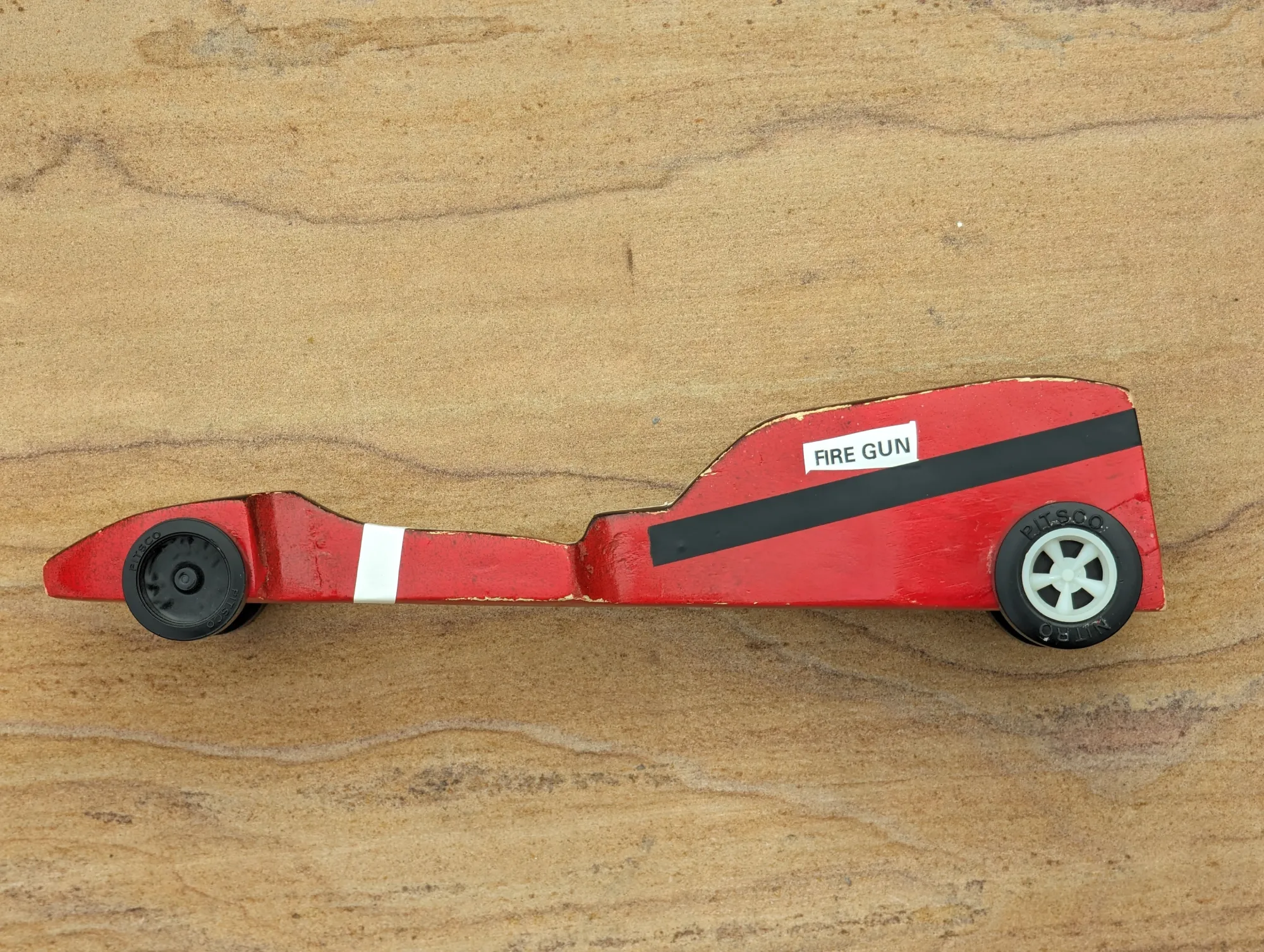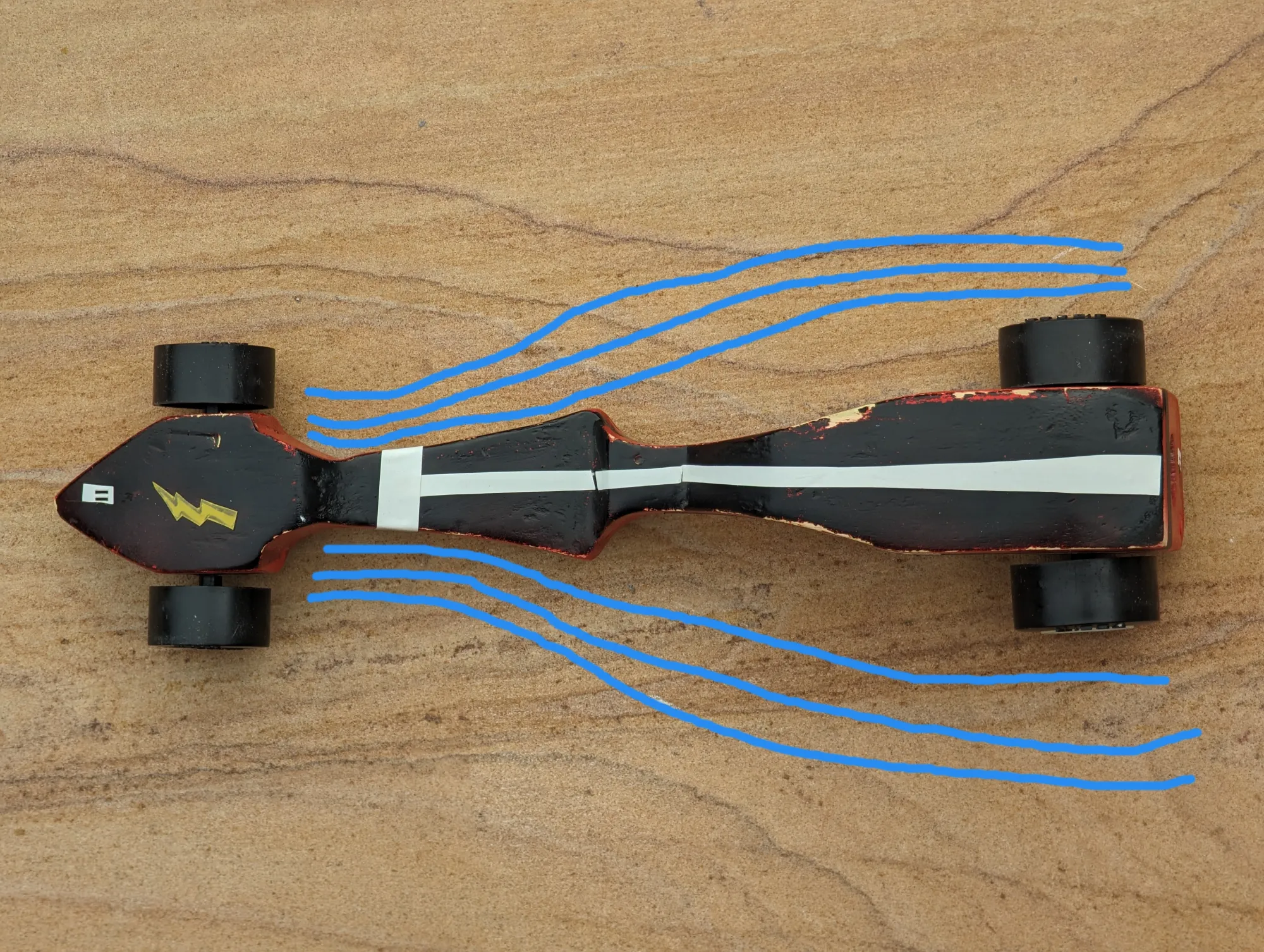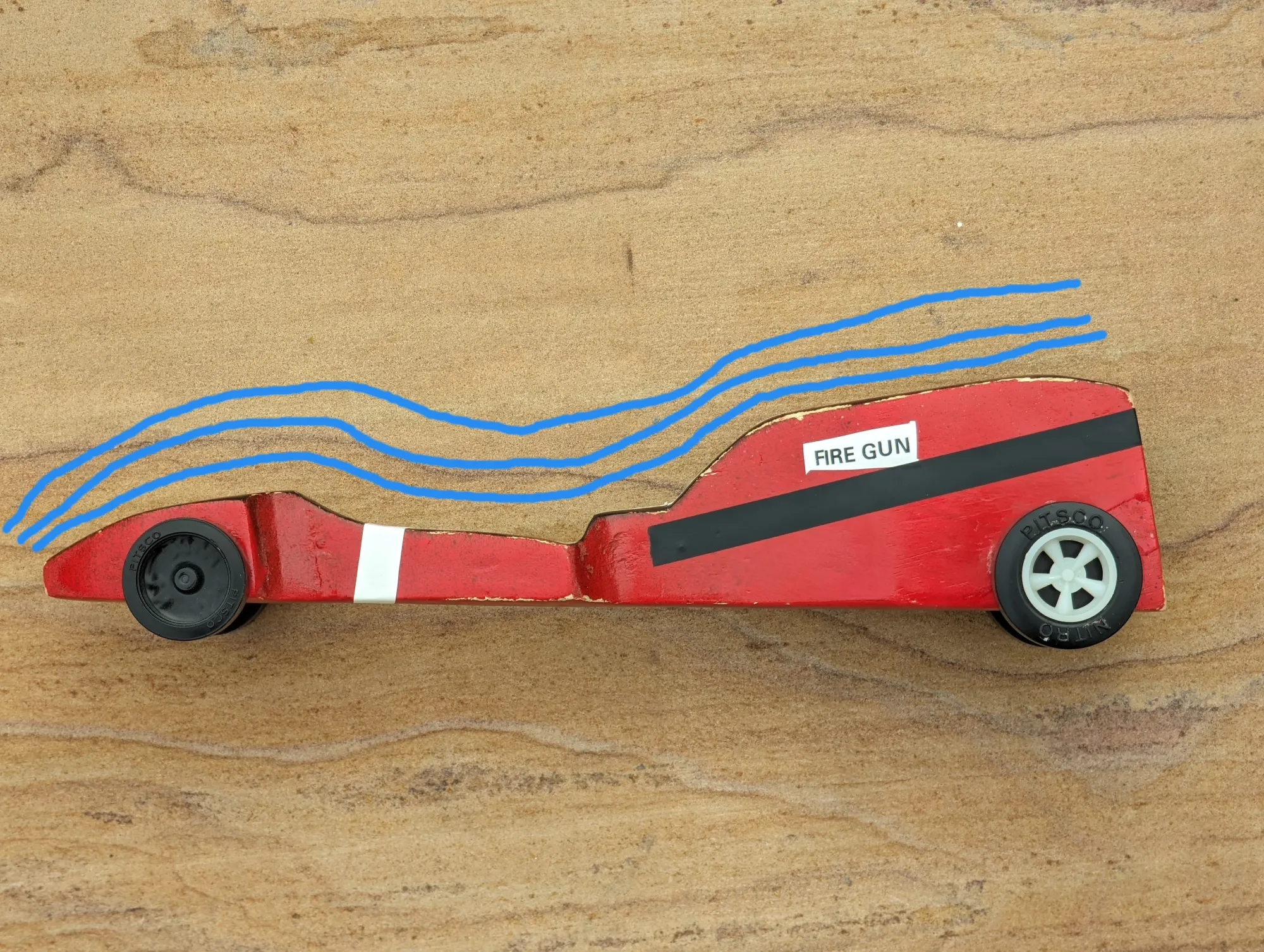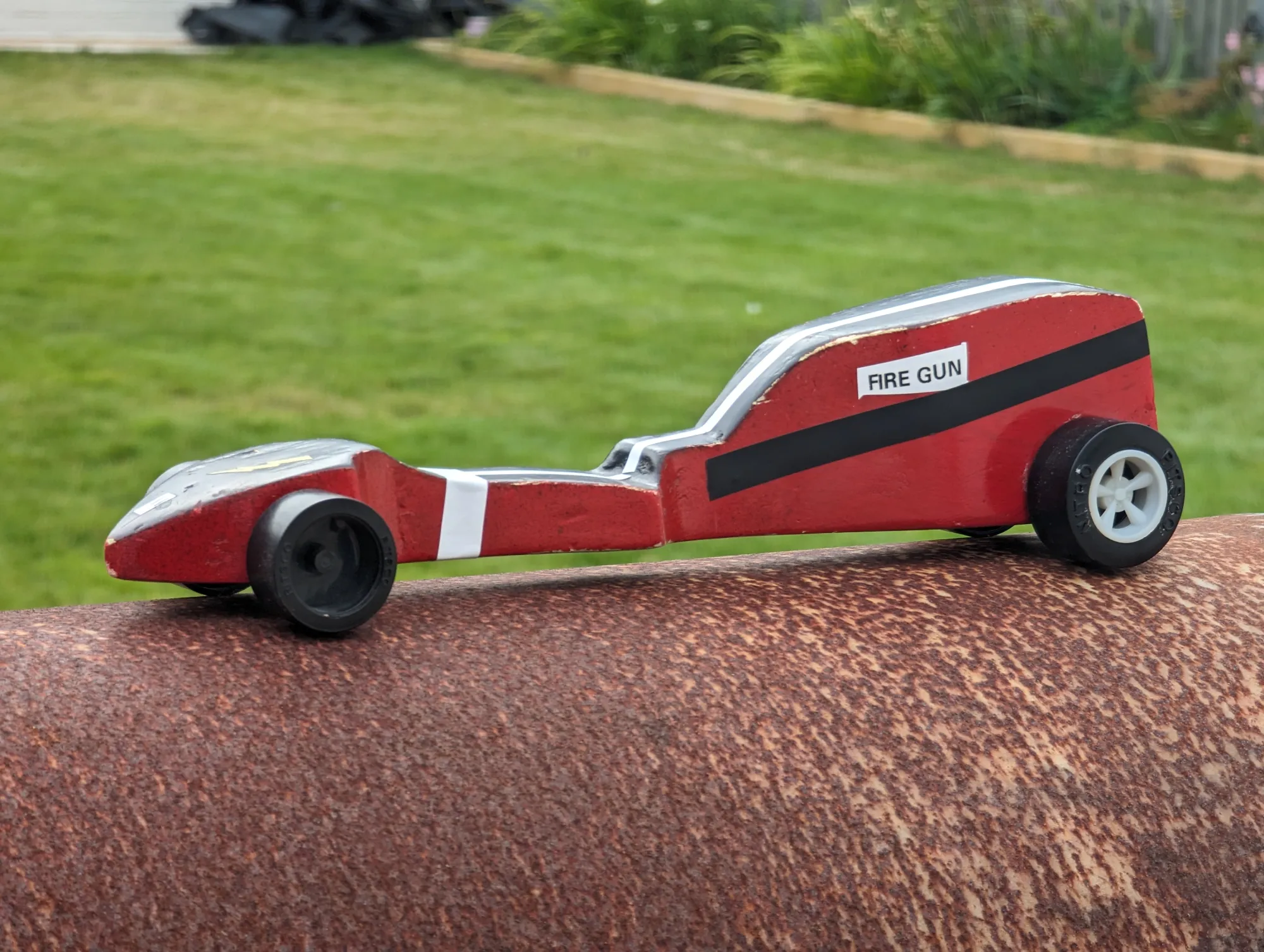Reason #42: Fire Gun
Here's something crazy that you may not know about me: I am NOT an aerodynamicist. Scandalous, I know. That did not stop 12-year-old George from wanting to design a "Formula 1 in Schools" car though, so he stayed behind after school to craft a car out of balsa wood.
The car needed a cool name, and so with the black-and-red livery I called in "Fire Gun". In this post, over 13 years AFTER I made the original, I will be walking you through my (lack of) design process, so you can see how comedically silly 12-year-old George was in his hunt to build the fastest CO2-powered car. Spoiler alert: It wasn't that fast.

Design Considerations
When I started designing this car, (I thought) I knew the three things this car needed to go as fast as possible.
- Minimal Weight
- Minimal Drag
- Maximum Grip
So how did I accomplish those things?
Minimal Weight
Theoretically the easiest, all you have to do is make the car as small as possible! There were a few design considerations however, the CO2 canister had to be at a certain height, and the wheelbase was fixed, but I generally cut as much material as I could... except at the back.
The big behind served a purpose... supposedly. From a weight point of view, it was to press the wheels into the ground more.
Minimal Drag
This was partially linked to the first one, after all, the less weight, the less there is to drag. To understand some of my more... exotic design choices though, we need a top-down view.

As anyone who is a real aerodynamicist will tell you, the biggest pain point is open wheels. To this end, I had decided to add an arrow-head shape into the body to divert the airflow away from the rotating wheels, whilst still minimising weight as best as possible. Suffice it to say that not only were the fins not large enough, the overall execution left a lot to be desired.
Maximum Grip
Okay, this is where it gets really crazy. As I said, I had added a big behind to Fire Gun to maximise the weight on the rear wheels, but that wasn't the only reason! If we look at the image again, we see the shape has a secondary purpose:

That's right - 12-year-old George expected the sloped shape to not only add rear grip by being heavier but also, the air would press against the body of the car and push it down even further!
Lessons Learned
12-year-old George was an idiot. There was other stuff in there too though! It helped to foster my love of Formula 1 as a sport, and though the designs weren't... aerodynamically sound, I'm glad I still have the car to this day. Whenever I look at it it's a reminder of a simpler time, a time where I thought I might actually be able to single-handedly design a race car.

Yesterday was a 7/10
This post is part of a series called "The Reason". I haven't committed to living forever, but I find a reason to live for one more day every day. Read the rest of the series here.